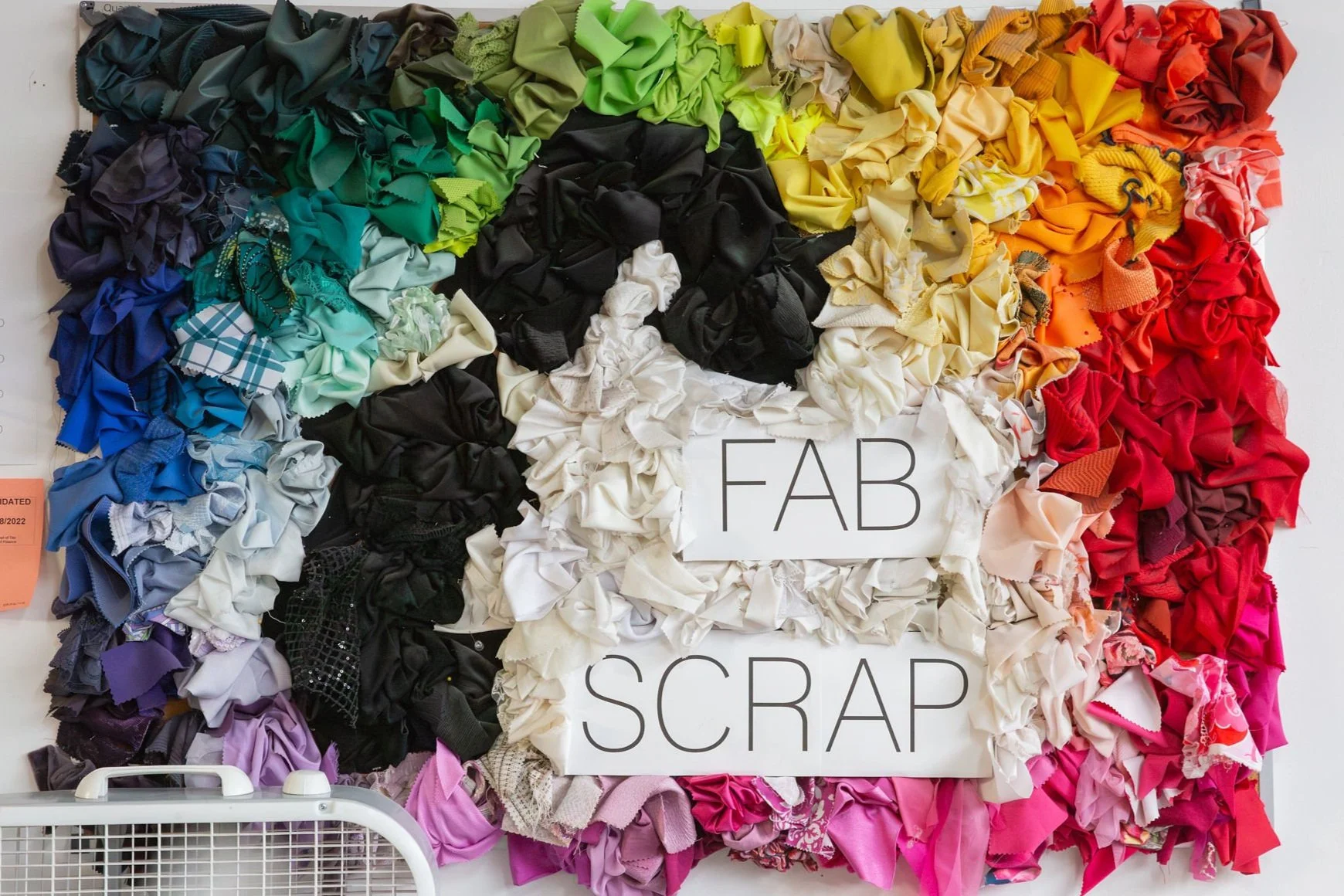A world without commercial textile “waste”
FABSCRAP is a movement of changemakers and your one-stop textile reuse and recycling resource.

We believe in a world where textile waste is no longer a byproduct of creativity but an opportunity for innovation.
We see beyond waste, uncovering the potential in every scrap of fabric to create something meaningful, beautiful, and enduring. We challenge the fashion industry to embrace thoughtful, transparent processes that keep fabric accessible, in the hands of creators, and out of landfills.
We are more than a recycling solution; we are a movement. A community of brands, partners, creators, innovators, and changemakers committed to reimagining the future of textile waste. Together, we reduce waste, inspire innovation, educate and empower a collective shift towards a more sustainable world; shaping the future of fashion.
We’re driven by our tangible impact, ensuring that our actions resonate far beyond the fabrics we touch. We know that the choices we make today will shape the world we leave for tomorrow.
We believe that everyone has a role to play. By giving new life to discarded fabrics, we’re proving that fashion circularity and sustainability is within reach at all levels, and together, we can create a more responsible, conscious, and circular world.
The textile waste problem
200,000 tons
of clothing, shoes, accessories, and linens are thrown out in NYC annually.
6%
of NYC’s total waste stream is post-consumer textile waste.
40 times more
textile waste is generated by commercial sources compared to residential waste*.
*Leonard, A. (2007). The story of stuff [Video]. The Story of Stuff Project.
While residential waste (discarded by an individual or family) is collected by the Department of Sanitation, commercial waste (discarded by a business) is handled by private carters that lack clear reporting and recycling enforcement, making it hard to characterize and quantify.
Even if designers want to recycle their textile waste, they face challenges due to lack of infrastructure and scale. A design office might produce 20 boxes of fabric, which is too much for small arts organizations to handle but far below the minimum needed for industrial recyclers. Both options also require extra time and effort for transportation and research.
The FABSCRAP model
FABSCRAP was created to meet New York City’s commercial textile recycling needs. Materials that traditionally would have gone to landfill are now being properly recycled and made available for reuse. FABSCRAP is a 501(c)3 charitable organization, though it flips the traditional non-profit model. The service fee covers operational costs and allows us to redistribute usable fabric to students, artists, local designers, and crafters for reuse.
From idea to impact
The FABSCRAP story
FABSCRAP began with a simple yet powerful idea: to address the growing issue of fabric waste in the fashion industry. While working at the NYC Department of Sanitation, Jessica Schreiber was approached by fashion brands seeking a way to recycle their excess fabric. This demand sparked the vision for FABSCRAP, which officially launched in 2016 after Jessica successfully pitched her concept on Lifetime’s Project Runway: Fashion Startup and secured investment grants.
In 2017, Camille Tagle joined as Co-Founder, bringing innovative approaches to fabric redistribution and establishing FABSCRAP as a leading resource for sustainable materials.
FABSCRAP’s mission is to redefine how we perceive and handle commercial textile waste. Through our work, we provide a convenient and transparent recycling and reuse service for businesses and individuals; act as an affordable and accessible materials resource, connecting fabric to creators and innovators; and build a diverse and empowered community of changemakers dedicated to sustainability.
The team behind the fabric
We’re so fortunate and proud to have a team made up of dedicated individuals committed to reshaping the future of textile waste and sustainability.
Meet our board
Dave Hirschler
president
CAMILLE TAGLE
vice president
Margaret Bishop
secretary
Nick Dominguez
Treasurer
Jessica Schreiber
board member
Claire Kells
BOARD member
Meaghan Condon
board member
Careers
Interested in joining our team? See our current job and intern roles available, and become part of the change.

Make your inbox a little more FAB
Stay in the know - receive our email newsletter with upcoming event information and special announcements.







